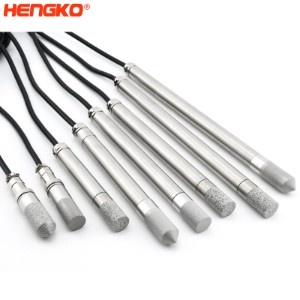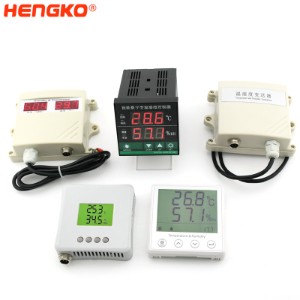Temperature And Humidity Sensors For Server Room
Industrial temperature and humidity sensors can help you keep track of important environmental parameters in your data center. Typically, data centers have multiple temperature and humidity sensors installed. In this article, we will take a closer look at sensors and their use in data centers.
Changes in data center room temperature may cause downtime due to overheating. Frequent downtime causes equipment repair or replacement and unnecessary cost increases. With the proper temperature and humidity sensor monitoring equipment, you can quickly identify and correct ambient temperature problems and reduce this loss.
Choosing the right temperature monitoring system can be challenging. With so much at stake, you can't afford to adopt a trial-and-error approach. To create a secure and consistent climate in your data center, measure a large number of elements and analyze the ambient temperature monitoring system. Depending on your data center needs, you may want to consider using multiple sensors in a single rack to Thermal Mapping each cabinet.
1. What temperature and humidity sensor should I use?
a. Temperature
The Temperature has a significant impact on servers. For them to function properly, you must keep them within a specified operating range. Depending on the size of your data center, the life span of equipment in this range may vary. Preventing ambient temperature sensors from indicating overheating allows you to save costs.
b. Humidity
In a data center, humidity is almost as important as temperature. If the humidity is too low, electrostatic discharge may occur. Too high and condensation can occur. The relative humidity sensor notifies you when humidity levels exceed the set range, allowing you to change the humidity level before a problem occurs.
Available for wall and duct mounting, HENGKO temperature and humidity transmitters are capable of measuring relative humidity and temperature in a variety of building, agricultural, plumbing, industrial, and other industries. IP67-rated transmitters for wet areas and sensors with radiation shielding for outdoor use are available.
2. Temperature and humidity sensor placement in the frame
When deploying rack-level sensors, the first thing to focus on is the hot spot area. Because heat rises, sensors should be placed at the top of the rack. Place sensors at the top, bottom, and middle of server racks to get a complete view of airflow in your data center. Placing sensors at the front and back of the rack allows you to monitor the temperature of incoming and outgoing air and calculate delta T (ΔT).
3. Make real-time temperature monitoring visible
HENGKO recommends a minimum of six temperature and humidity sensors per rack. To monitor intake and exhaust temperatures, three will be placed in the front (top, middle, and bottom) and three in the back. In high-density facilities, more than six sensors per rack are typically used to build more accurate temperature and airflow models, and this is highly recommended, especially for data centers operating at 80°F ambient temperatures.
Why? Because you can't find a hotspot if you can't see it, simply put. Real-time temperature monitoring connected to the data center network notifies selected employees via SNMP, SMS, or email when a safe temperature threshold is exceeded.
And so on, the more sensors you have, the better. It's nice to know that you will always have access to a real-time alert system. It's even better if you can view computer-generated models driven by a large number of rack sensors and track down the root cause of the problem.
The HENGKO's server room temperature and humidity monitoring solution can better track the environmental data for you, adjust the environmental temperature and humidity according to the real-time data, and keep the data center in good working condition.
Still Have Any Questions Like to Know More Details For the Humidity Monitoring Sensor , Please feel Free To Contact Us Now.
Also You Can Send Us Email Directly As Follow : ka@hengko.com
We Will Send Back With 24-Hours, Thanks for Your Patient !
Send your message to us:

